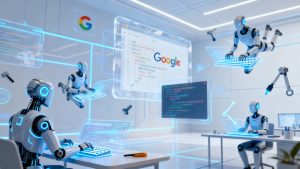Modern AI coding tools can generate new code at unprecedented speed, yet a significant volume fails to make it into production environments. Despite viral demos and rapid advancements, the pace of shipped products hasn’t matched expectations, highlighting the disconnect between prototype success and production reliability.
Core Challenges Hindering AI Code in Production
Several critical hurdles prevent most AI-generated code from surviving beyond initial prototyping. These include integration complexities with existing tech stacks, the limitation of AI models to learn from past mistakes, and tool maturity gaps in the software delivery process.
Integration Struggles with Established Systems
AI excels in generating clean, greenfield solutions, but integrating these outputs into legacy systems is challenging. Production environments demand strict compliance with service boundaries, data contracts, CI/CD pipelines, authorization middleware, and performance objectives. Transforming ideal code into production-ready solutions requires precise, parameter-driven design—something current AI tools struggle to achieve outside isolated tasks.
The Dory Effect: Short-Lived AI Memory
Troubleshooting and debugging typically require models to understand years of architecture, code evolution, and emergent behaviors. Most AI code generators, operating with limited context and memory, fall short in grasping complex interdependencies or learning from previous fixes. This cognitive limitation results in persistent technical debt and unresolved bugs, especially across large-scale systems with decades of history.
Tool Maturity and the Incomplete SDLC
While code generation has advanced rapidly, supporting tools for deployment, testing, and quality assurance lag far behind. Studies show only 55% of AI-generated code is secure, while nearly half contains vulnerabilities—highlighting the gap between demo-ready code and operational standards. Manual reviews remain essential, with only a minority of developers fully trusting AI output without human oversight.
Shifting From Incremental Gains to Holistic Solutions
Current approaches often enhance individual steps in the software lifecycle, but the greatest advances will come from holistic tools able to reverse-engineer complex systems and systematically eliminate unexpected behaviors. Effective adoption depends on accuracy, reviewable artifacts, and addressing context gaps—not just faster delivery.
Moving Forward: Trust and Transformation
Developer trust remains a critical sticking point; just 3% of professionals highly trust the accuracy of AI-generated code and 75% still require manual checks before merging AI suggestions. The path to production-ready AI code lies in moving beyond prototype-level speed, integrating smarter architectures, and developing tools that can both creatively build and scientifically analyze software operations.
AI code may continue to impress in demos, but the transition to robust, maintainable production solutions is ongoing. Future breakthroughs will require a new generation of AI tools focused on deep architectural understanding, context-aware troubleshooting, and end-to-end software delivery support.
Read more such articles from our Newsletter here.



